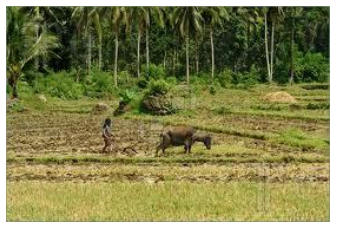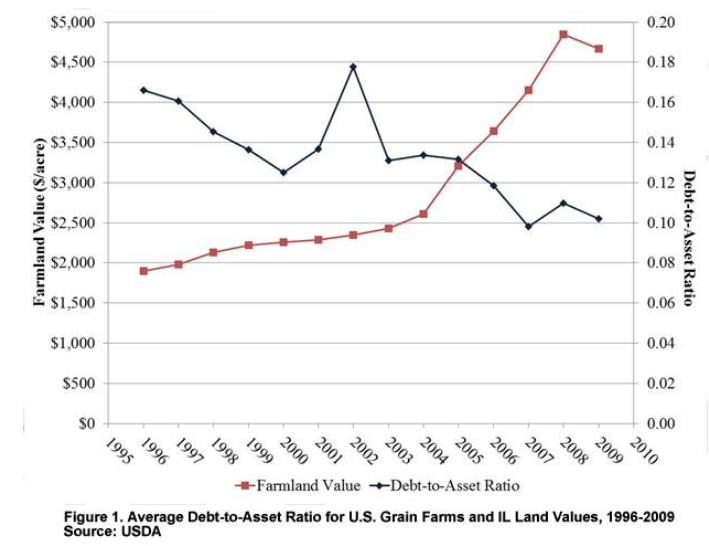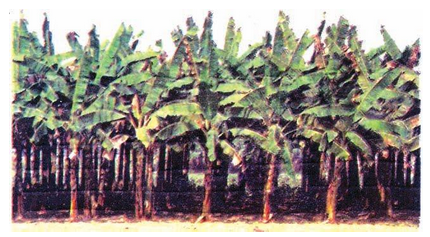
Types Of Farming In India
Agriculture of Class 10
Primitive Subsistence Farming
This type of farming is still practised in few pockets of India. Primitive subsistence agriculture is practised on small patches of land with the help of primitive tools like hoe, dao and digging sticks, and family/community labour. This type of farming depends upon monsoon, natural fertility of the soil and suitability of other environmental conditions to the crops grown. It is ‘slash and burn’ agriculture. Farmers clear a patch of land and produce cereals and other food crops to sustain their family. When the soil fertility decreases, the farmers shift and clear a fresh patch of land for cultivation. This type of shifting allows Nature to replenish the fertility of the soil through natural processes; land productivity in this type of agriculture is low as the farmer does not use fertilisers or other modern inputs. It is known by different names in different parts of the country.

It is known as jhumming in north-eastern states like Assam, Meghalaya, Mizoram and Nagaland; Pamlou in Manipur, Dipa in Bastar district of Chattishgarh, and in Andaman and Nicobar Islands. This primitive form of cultivation is called ‘Bewar’ or ‘Dahiya’ in Madhya Pradesh, ‘Podu’ or ‘Penda’ in Andhra Pradesh, ‘Pama Dabi’ or ‘Koman’ or Bringa’ in Orissa, ‘Kumari’ in Western Ghats, ‘Valre’ or ‘Waltre’ in South-eastern Rajasthan, ‘Khil’ in the Himalayan belt, ‘Kuruwa’ in Jharkhand, and ‘Jhumming’ in the North-eastern region.
SHIFTING AGRICULTURE:
- It is ‘slash and burn’ agriculture. Farmers clear a patch of land by cutting and burning and produce cereals and other food crops to sustain their family.
- When the soil fertility decreases, the farmers shift and clear a fresh patch of land for cultivation.
- This type of shifting allows Nature to replenish the fertility of the soil, is low as the farmer does not use fertilizers or other modern inputs.
- It is known as jhumming in north-eastern states like Assam, Meghalaya, Mizoram and Nagaland. It is known by different names in difference places.
- Local names of shifting agriculture in the world
Milap - Mexico, Central America.
Roca - Brazil
Lading - Indonesia
Ray - Vietnam
Local names of shifting agriculture in India
Jhuming - North-Eastern States
Dahia - Madhya Pradesh
Podu - Andhra Pradesh
Kumari - Western Ghats
Khil - Himalayan belts
Intensive Subsistence Farming:
This type of farming is practised in areas of high population pressure on land. It is labour intensive farming, where high doses of biochemical inputs and irrigation are used for obtaining higher production.
Though the ‘right of inheritance’ leading to the division of land among successive generations has rendered land-holding size uneconomical, the farmers continue to take maximum output from the limited land in the absence of alternative source of livelihood. Thus, there is enormous pressure on agricultural land.
COMMERCIAL FARMING:
- In this type of farming crops are grown for market
- Use of higher doses of modern inputs, e.g. high yielding variety (HYV) seeds, chemical fertilizers, insecticides and pesticides.
- Degree of commercialization of agriculture varies from one region to another.
- Certain crops are considered commercial in certain areas, for eg. in Haryana and Punjab rice is a commercial crop but in Orissa it is a subsistence crop.
- Cultivation of cotton in Maharashtra and Gujrat and Sugar cane in Uttar Pradesh are other examples of commercial crops.

Plantation Agriculture:
Plantation is also a type of commercial farming. In this type of farming, a single crop is grown on a large area. The plantation has an interface of agriculture and industry. Plantations cover large tracts of land, using capital intensive inputs, with the help of migrant labourers. All the produce is used as raw material in respective industries. In India, tea, coffee, rubber, sugarcane, banana, etc.. are important plantation crops. Tea in Assam and North Bengal coffee in Karnataka are some of the important plantation crops grown in these states. Since the production is mainly for market, a well developed network of transport and communication connecting the plantation areas, processing industries and markets plays an important role in the development of plantations.

Banana plantation in Southern part of India




